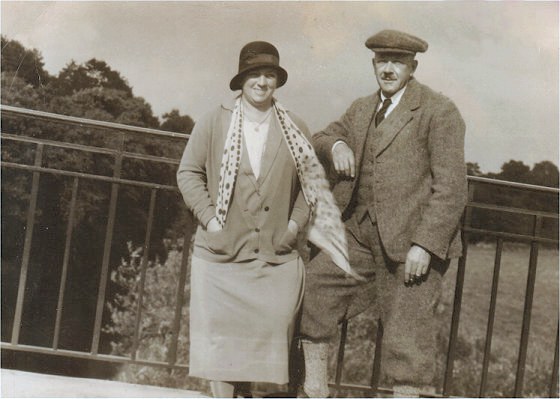| < Back |
Next
>
|

| Laura
and Andrew Espeland It's hard to say how old they were in this picture
but the clothing styles seem to indicate that it is perhaps during the
1930s. "In the late 1920s, knickers were also the latest in casual wear for the well-dressed gentleman, and are still worn occasionally today.In the fall and winter, English driving caps were popular for casual wear. 1938 After the early 30s, hemlines rise steadily. The shoulders become broader with puffed sleeves a common expression of shoulder width. (compare this with the silhouette of 1900). The waistline is more definitely marked now. 1943
Issued by the War Production Board, regulations on use of fabric for
clothing, the Limiting Order L-85 restrictions, were announced. The
main purpose of these regulations was to freeze the silhouette, since
any significant change in fashion would have necessitated changes in
manufacturing equipment, techniques and labor. Wool, silk, rubber, leather,
nylon were all needed for the war effort. The
restrictions appplied to everything but wedding gowns, maternity apparel,
infants and children's clothing up to 4 years, religious vestments and
burial shrouds (Milbank, 1989)." |